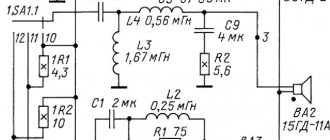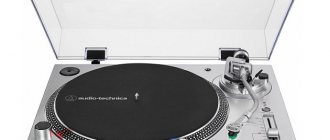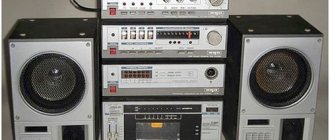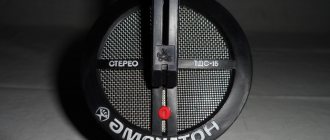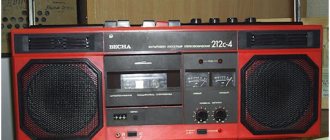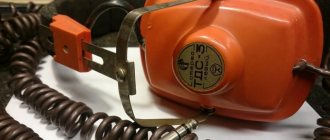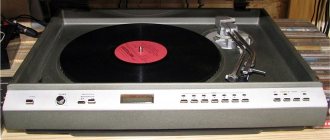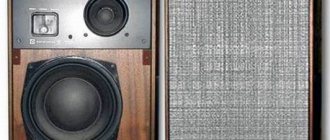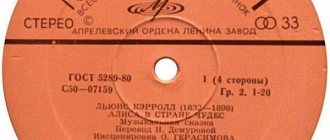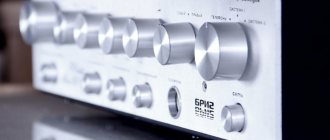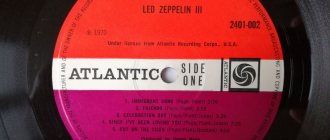The history of the Latvian manufacturer of acoustic systems and audio equipment VEF Radiotehnika RRR (Rīgas Radio Rūpnīca, i.e. “Riga Radio Plant” translated from Latvian) dates back to 1926.
In the mid-1920s, European countries were recovering from war and revolution. Young states appeared on the map. Tired of the hardships they had endured, people longed for a calm, peaceful life. It was during this period that radio broadcasting began to gain popularity in the world. The possibility of affordable transmission of speech and music over the air excited the minds of both younger and older generations.
Radio boom and business tricks
In 1920, the Bolshevik government signed an armistice agreement with Latvia and, in fact, recognized its independence. A new peaceful stage of development was beginning.
Soon the wave of radio popularity swept over the population of the young republic, as evidenced by the fact that the number of radio subscribers here increased from 1,500 to 10,000 only from 26 to 27. In June 1924, an association of radio amateurs was founded in Latvia, and in In 1926, the magazine “Radio” began publishing.
Demand gave birth to supply. Therefore, many businessmen began to actively import radios from abroad. One of these entrepreneurs was Riga resident Abram Leibovitz, who at that time owned a store selling photographic supplies.
Abram Leibowitz
In 1926, Leibowitz received permission to trade in foreign radio equipment and radio components. However, this type of activity was not entirely profitable, since the Republic of Latvia had a competition law that gave priority to local producers in promoting goods to the market.
Leibowitz got out of the situation in the following way: radio receivers were purchased in Germany (usually these were models from Loewe-Opta, DeTeWe, Lumophon, etc.), they were disassembled there on the spot and then, under the guise of radio components, they were sent to Latvia, where they were assembled again.
The receivers were labeled with the ALRadio logo, under which they were sold as locally manufactured products. In October 1926, Abram Leibovitz already had permission in his hands that he had the right to produce radio receivers and parts for them according to approved schemes.
AL
In 1927, he founded a joint-stock company, which was named “Foto-radio centrāle A. Leibovic” (“Photo-radio central A. Leibovitz”) and, in fact, became one of the forerunners of the production association “Radiotekhnika”.
In 1929, the brand's line included detector radios AL D0, AL D3, model AL L1, as well as direct amplification radios AL L3, AL 3 (three-tube), AL 4 (three-tube), AL 12 (three-tube), AL 20, AL 47 and Gloria. At the very beginning of the 30s, the AL P detector radio receiver with a 1-tube amplifier appeared in the model range.
Alexander Apsitis
In 1930, a young talented radio engineer, Alexander Apsitis, joined Leibowitz’s company. Alexander was born in 1906 in Riga and grew up in an ordinary working-class family. From the age of sixteen he worked in the city telephone network.
By 1930, the young man graduated from the city vocational school and evening technical school, and at the age of 22 he became a prize-winner of a competition held by the Ministry of Internal Affairs, and designed 200 radios for the border guard, equipped with three lamps and battery power.
In 1931, while working at Foto-radio centrāle A. Leibovic, Apsitis introduced the Rigafons receiver with E424N, B409 and 1802 lamps on board, which was released in a circulation of 1,000 copies.
Kosmofons
Among the subsequent models, one can highlight the Kosmofons device of the 1932 model, which broadcast in the LW/MW bands and was equipped with RENS1264, RENS1204, RES164 and RGN1054 lamps, as well as a series of 2-lamp Tautofons receivers released in 1933 under the indices “1”, “2” " and "3".
In 1932, 10 people were already working in the radio equipment production workshop, which was located in the Leibowitz family home. However, in 1938, a separate premises for a workshop were purchased on credit.
In 1933, Leibovitz and Apsitis broke off their business relationship. The reason for the gap was differences in views: Alexander insisted on producing his own high-quality products, and Leibovitz had a purely commercial vision of things, within which a policy of severe economy was pursued, including on the quality of components.
Soon after this, Apsitis, together with his work colleague Francis Žukovskis, opened a new enterprise - a company for the production of radio equipment A.Apsītis un F.Žukovskis, which, thanks to cooperation with the German concern Telefunken, gained access to branded parts (radio tubes and other elements) and some licensed schemes.
Apsitis's enterprise progressed quickly. At the very beginning these were conventional models of direct amplification radios - including battery versions - but in 1935 Alexander introduced his first tube superheterodyne receiver, the T-420 "Koncertsupers", which had a massive wooden case, reminiscent of the design of some Telefunken models, and worked in the DV, SV and HF bands.
T-420
Despite the external similarity, the T-420 used the original circuit topology of the authorship of Apsitis himself. At the same time, high quality assembly was guaranteed, thanks to which the company’s products were in stable demand. Subsequently, in all the equipment developed by A. Apsitis, only original author’s solutions were used, thanks to which his company was successful.
In 1936, the T612 model and the high-quality T665 superheterodyne receiver appeared, which featured sophisticated circuitry. The T665 circuit topology included an automatic gain control (AGC) system, a 3-stage triode VLF and an output section equipped with an AD1 tube, which was very popular among fans of high-quality sound. In fact, every year the company released new, more progressive models.
T665
In 1938, the T934 model appeared, which is a hybrid of a superheterodyne and regenerative receiver. In 1940, the Apsitis company began producing its most popular devices: the budget T4044 and the high-end T4055.
T4044
In 1938, there were 29 official radio manufacturers in Latvia. At that time it was quite a profitable business.
New successes and nationalization
Leibovitz's company continued to expand and in the second half of the 30s it became one of the largest enterprises in Riga, employing more than a hundred workers. In 1934, the company’s entire model line already consisted of receivers of its own production, since it became problematic for people of Jewish nationality to purchase components in Germany.
In 1935, the Eiropafons 35 and Eiropafons 35/II models appeared, the latter of which was a “combine”, used different lamps (four-volt Philips) and, in addition to the receiver, included an electrogramophone. Among the subsequent models are the Ferro Super 36 (1936) and Ferro Super 37 (1937) superheterodyne receivers, equipped with coils with ferromagnetic cores, as well as the Reflex Supers (1938) model with a somewhat unusual circuit design.
Eiropafons 35
However, despite the attractive design, the build quality of Leibowitz-made components was not always up to par, and some technical solutions remained questionable. The reason for this was total savings on virtually everything, including details. However, thanks to competent advertising and attractive appearance, sales did not fall.
In 1939, Abram Leibowitz suffered a heart attack, after which he was unable to return to his work, so his son took over the company. After this, the quality and complexity of the models increased somewhat, as evidenced by the release of a completely worthy device TM764.
The 40s made their own adjustments, since the establishment of Soviet power in the republic affected all Latvian enterprises without exception. Abram Leibovitz's company Foto-radio centrāle A. Leibovic, which at that time employed 250 people, was nationalized, but temporary management was transferred to the hands of his sons. Later, together with another company Kolifox (Nikolajs Klemptners), Leibovitz's company merged into the Radiopionieris enterprise.
TM764
The nationalized company of Alexander Apsitis, which employed 50 people, received a new name Radiotehnika, and Alexander himself, thanks to friendly relations with the Latvian writer Willis Lacis, who adheres to communist views, became the director of this enterprise.
After the annexation of Latvia under the jurisdiction of the USSR, the question of the use of components arose, since an order was given to switch to Soviet lamps corresponding to American models.
Corvette EP-003
0
“Corvette EP-003” was produced since 1978, and along with “Electronics B1-01”, was one of the first Soviet vinyl players that marked the movement towards the production of Hi-Fi audio components in the USSR. Unlike many players that in one way or another copied foreign designs, the Corvette EP-003 was a very original device, both in terms of design and technical solutions. The main feature of the “Corvette” was the use of viscous damping technology: a ball filled with a special viscous liquid was designed to reduce the resonances of the tonearm, although in the first place it simply caused surprise among those who saw this curious player for the first time. The unusual supporting disk, as well as the interesting design of the controls, also struck me with its appearance. The Corvette was equipped with an engine with direct disk drive and allowed listening to records at 33 and 45 rpm. The player was supplied complete with a GZM-008 pickup head. Despite some technical miscalculations, the “Corvette EP-003” (and the later modification “Corvette-038”) is one of the most interesting players that were produced in the USSR in the 70s and 80s.
Years of war
After Latvia came under German control, Radiopionieris and Radiotehnika became a subsidiary of Telefunken (Telefunken Gerätewerk Riga), which began producing products intended for military purposes. The branch's responsibilities also included the repair of high-precision German artillery optics, radio transmitters for military communications and radio receivers.
In 1944, during the retreat of German troops, all equipment of Riga enterprises was exported to Germany. However, Alexander Apsitis managed to save the means of production and hide them in a chemical storage bunker, and scrap metal and stones were loaded into shipping boxes ready for shipment.
The rest of the equipment, which included measuring instruments and other high-precision instruments, was hidden in the transformer booth. Thanks to such a risky operation, in which a group of Latvian partisans participated, by the end of 1944 the Apsitis enterprise was completely ready for launch, and Alexander himself was awarded the medal “For Valiant Labor in the Great Patriotic War of 1941–1945.”
In 1945–46, the plant began producing broadcast amplifiers and loudspeakers, as well as studio equipment intended for radio broadcasting in Riga. In the post-war years, the enterprise needed qualified personnel. After all, many of the factory workers were imprisoned because of their service in the Latvian SS Legion.
Apsitis personally turned to the deputy chairman of the government of the Latvian SSR for help in order to assist in the release of 19 of his former workers and himself took them from the place of detention to Riga. One of these workers was the experienced engineer Voldemars Slava, who later became the leading designer. By 1946, the staff of “Radio Engineering” already numbered about 400 people. Everything was ready to increase production and reach new levels.
Estonia EP-010
0
The history of the creation of this player was quite typical for the Soviet radio industry, when audio equipment was designed by cloning successful foreign developments. Thus, the very interesting and technically advanced player “Estonia EP-010” was copied from the no less interesting model “Optonica 7100” (a sub-brand of the Japanese company Sharp). The “Estonia EP-010” player was part of a block stereo complex, which also included a tuner, preamplifier, power amplifier and speaker systems. First of all, the design of the player is interesting: the disc and tonearm are recessed into the body and covered with massive tinted glass, which, unlike acrylic dust covers, does not become covered with many scratches over time. In addition, despite the abundance of plastic in the design, “Estonia-010” still looks quite interesting today. As for the technical part, things are even more curious here: the player is equipped with an electrically driven tonearm, and the controls are fully automatic. By pressing a key, the automation starts the disc, brings the tonearm to the desired position and starts playing the selected track (from 1 to 7) - almost like when listening to music from a CD player! When the record ends, the player stops the disc and returns the tonearm to its original position. All this luxury allowed the Soviet music lover not to manually change the position of the tonearm and control playback only using the keys. Plus, a fully automatic vinyl record player was a great way to show off to your audiophile friends. Perhaps even more interesting would be the presence of a remote control, but such functionality is missing here. In addition to the ability to play the selected track, there is an option to repeat playback (let's call it the borrowed word repeat). This function is very convenient, because after pressing the “Estonia” key, it will automatically play again the side of the record that is currently being played. In addition, a nice feature of this turntable is that it has a replaceable headshell, which makes it quite easy to change it, as well as the pickup head, to a more preferable option.
Post-war time
The first post-war radio was the high-end tabletop model Riga T 689 from 1946, equipped with nine lamps. The following year, the more budget receiver Riga T 755, assembled in a stamped metal case, went into production.
Riga T 689
In 1947, the expansion of production capacity began: a three-story building was built for the mechanical repair and experimental shops. In subsequent years, a galvanizing shop, a radio installation shop, etc. appeared.
Riga T 755
In 1948, the first portable tube radio receiver in the USSR, Pionieris (“Pioneer”), was developed, powered by a set of batteries, which, however, did not go into production. The following year, the B-912 regenerative battery receiver appeared, using two lamps.
Riga T-51
At the very beginning of 1950, Radiotehnika released a very serious product for those years - a top-class tube radio console Riga T-51, which had impressive dimensions (1,300 x 500 x 1,000 mm) and was equipped with a vinyl player. Later versions had an automatic player that allowed you to automatically change up to 10 records. The topology of the circuits provided for the use of the 21st lamp.
The output 2-cycle stage was built on four 6P3S type lamps, it was possible to adjust timbres, and there was a loudness compensation function. The radiola was equipped with three midrange/bass speakers and one high-frequency driver in a horn design. A total of 10 copies were produced - two of them were donated to I.V. Stalin and Mao Zedong.
In addition to producing radio products, the company also fulfilled government orders - it manufactured broadcast equipment, studio remotes for radio broadcasting and other professional-level equipment.
In October 1951, the plant was named after the Russian physicist, electrical engineer and inventor in the field of radio communications, Alexander Stepanovich Popov. At the same time, the main staff of Radiotekhnika began to have problems. In 1950, following a denunciation, Alexander Apsitis was demoted to the post of chief engineer, and in 1952 he was completely transferred to another plant.
In the same year, Alexander went to prison because he was accused of producing defective products at the Radiotekhnika enterprise. The term was reduced after Stalin's death, but his stay in prison had a negative impact on Apsitis's general morale, as well as on his health. A disabled person of the 2nd group, he never returned to his enterprise and worked as a television technician in the small provincial town of Rauna.
Electronics B1-04
0
“Electronics B1-04” is a kind of exotic from the USSR and a very rare model of a vinyl player, which has been produced since 1980 by the Moscow NPO “Thorium”. When looking at this Soviet High End, it may seem that it does not look at all like a device designed in the USSR. And there is some truth in this, because the basis for the development of “B1-04” was the Bang & Olufsen Beogram 4002 vinyl player. In terms of design and basic concept, the similarities were very obvious, but the mechanics and circuitry were built on the basis of the Soviet element base and quite very different from the Danish “Beogram”. Perhaps the object to be copied was very good, and the final result in the form of the “B1-04” player also turned out to be very interesting. Externally, “Electronics” quite clearly copies the “Beogram 4002”, but differs in a protruding support disk (at B&O it was recessed into the body) and a different arrangement of control elements. Among the interesting features of the “Electronics B1-04” are a tangential tonearm with an electric drive and a touch control system that was luxurious for those times. Apparently, this player was prohibitively expensive and was simply inaccessible to most Soviet music lovers and audiophiles. Today, the few surviving copies of “B1-04” are in private collections of vintage equipment connoisseurs.
Increased growth and capacity expansion
In 1958, Valdis Pavlovsky took over the position of director of Radiotekhnika. The 60s became a time of rapid growth and expansion for Radiotekhnika.
If in 1954 about 100,000 units of audio equipment were produced, then in 1962 this number was doubled - with an average annual increase in production of approximately 10%, and in 1964 the plant already had 34 conveyors.
“In the 1950s–1960s, the stationary radio receiver “Riga-10” was popular, later the “Festival”, which was controlled remotely. He was also awarded a diploma at the exhibition in Brussels,” recalls Inars Klavins, author of the book “The Formation and Development of Riga Radio 33 years of his life.
Gauja
The plant was constantly expanding, new buildings were built. The production of more modern compact transistor radios “Gauja” (Gauja, 1961) began, which were replaced in 1963 by the “Selga” model with seven germanium transistors, powered by a 9-volt Krona battery.
Selga
The neat appearance of both models was developed by the Latvian artist, constructor and designer Adolfs Irbitis. “The pace of production was fantastic. If “Gauja” was produced in the amount of 10,000 in the first year, then the next year - already 100,000. “Selga” - up to 800,000 per year! ”- words of Inars Klavins.
In 1963, the production of the stationary tube radiogram “Rigonda” began, the name of which was borrowed from the novel “Lost Homeland” by Vilis Latsis (this was the name of the fictional island in the novel - an allusion to Riga).
In 1964, a significant event occurred. The company produced the first acoustic systems “Symphonija” (“Simfonija”) with “closed box” housings and a tube radio of the same name, for which they were intended.
The speakers were three-way speakers weighing 20 kg each. The first modification included the following loudspeakers: 3GD-15 (HF head), two 2GD-28 (midrange drivers) and a 5GD-3RRR woofer.
The model had a somewhat unusual design, which used specialized acoustic Helmholtz resonators, which were small compartments located at the bottom of the speaker.
The compartments were separated from the main part of the body by a horizontal partition and communicated with the main volume using corresponding holes in this partition. Resonators made it possible to enhance the bass component in the sound and improve the quality of low frequencies, and their tuning frequency depended on the diameter of the holes, the size of the compartments and the thickness of the partition, which was reflected in the parameters of the frequency response.
The cases were 10 mm thick and made of high quality birch plywood. The design of these speakers was carried out by a team of developers led by the outstanding Latvian engineer Roland Kerno, who worked at the enterprise during the occupation, when Radiotekhnika became a branch of the German Telefunken. According to some information, Kerno managed to learn several secret technologies related to the production of membranes for German speakers.
Symphony
In 1964, the engineer and talented leader O.K. became the director of Radiotehnika. Lenev. At this time, new production facilities were built on the outskirts of Riga, and the number of workers employed in production at Radiotekhnika reached 16,000 people.
In 1965, the enterprise came under the control of the Ministry of Communications Industry of the USSR. Thanks to this, access to the country's foreign exchange resources was gained, which made it possible to purchase new, more modern and advanced equipment.
In 1967, the second version of the Simfonija-2 radio went into production with updated speakers, each of which had three loudspeakers: 1GD-3RRR for high frequencies, 3GD-1RRR for midrange and 5GD-3RRR (6GD-2RRR in a later modification) for low frequencies. The nominal impedance was 9 Ohms, and one such speaker weighed about 16 kg.
Selga-402
At the end of 1970, Radiotehnika turned into a powerful production association, which included the main Riga Radio Plant named after. Popov (the main enterprise), as well as the Riga Electromechanical Plant (REMR, produced vinyl players), the Kandava Radio Plant (production of receivers) and the Orbita Design Bureau.
In 1970, the Selga-402 radio receiver was developed, equipped with silicon transistors of the KT315 series.
In 1971, perhaps the most popular version of the radio with separate speakers, Simfonija 003, was released. Each speaker system weighed 15 kg, had smaller dimensions compared to its predecessor and was equipped with the following dynamic heads: 1GD-3RRR, 3GD-1RRR and 6GD-2RRR.
The frequency range covered the interval from 50 to 15,000 Hz. The radio receiver operated in the VHF, HF 1-4, SV and DV ranges, and the amplifier used 6P14P lamps and developed a power of 4 W per channel.
Simfonija 003
In 1973, Radiotekhnika moved to a new residential area of Riga - Imanta. In this case, completely new lines with foreign equipment were used, which were located in new buildings.
The company received the specialized facility necessary for every manufacturer of acoustic systems: an acoustic laboratory, which included reverberation and anechoic chambers, as well as a department for climatic testing.
“The equipment for the galvanic shop was purchased in Germany. The electroplating complex met the best global technological achievements of its time, says Inārs Klavins. “There was not only mechanization, there were automatic machines on some lines.”
Description of the Radiotehnika EP-101 player.
“Radio engineering E11-101-stereo” is an electric player of the first complexity group, designed for electrical playback of sound recordings from stereo and monophonic records for subsequent electro-acoustic playback
Through external amplification devices of various types or subsequent recording them using a tape recorder.
The electric player is equipped with a 1-EPU-70S playing device.
About the Radiotehnika 101 stereo kit.
In general, the player was supplied together with the Radiotehnika 101 stereo kit. In which there were four devices
Radiotehnika EP-101 – player
Radiotehnika T-101 – tuner
Radiotehnika U-101 – amplifier
Radiotehnika M-201 – tape recorder
Legendary S-90
In 1975, at the All-Union exhibition “Svyaz 1975”, new products from Radiotekhnika were presented: the Allegro-002-stereo electrophone and the Victoria-003-stereo radio. According to the classification then accepted in the USSR, both models belonged to the highest class of devices.
Allegro-002-stereo
To unlock their potential, new speakers with more accurate and high-quality sound were required. The development was entrusted to KB Orbita, one of the leading developers of which was Roland Kerno, who included the requirements of the Hi-Fi standard DIN 45500 in the terms of reference for the new speakers.
Victoria-003-stereo
Thus, in 1977, the first 35AC-1 models appeared, designed by Roland Kerno and Dzintars Lasis. The three-way speakers had a bass-reflex design with an output on the front panel, so they could be installed closer to the wall without fear of low-frequency hum.
35AS-1
MF and HF drivers were located in a separate closed compartment in order to minimize the influence of parasitic resonances. A 10GD-35-3000 head was used to transmit high frequencies, the “middle” was at the disposal of a 15GD-11-120 midrange driver, and the bass was controlled by a large 30GD-1-25 speaker. The model had step-level controls for mid and high frequencies.
Two years later, an improved version appeared, called S-90, well known to all music lovers living in the USSR. The sensitivity of the model was 88 dB, and the frequency range was from 25 to 25,000 Hz.
S-90
The speaker impedance was 4 Ohm, the nominal power reached 35 W, and the peak power was 90 W (hence the number “90” in the name). Each such speaker weighed 23 kg. The model was equipped with a 26 mm tweeter 6 GDV-6-16, a 105 mm midrange driver 20 GDS-1-8 and a 220 mm woofer 75 GDN-1-4. The body had fairly thick 16 mm walls and was made of chipboard. The front panel was made of plywood and had a thickness of 22 mm.
Later, versions S-90B and S-90D appeared, which had overload indicators, had an improved housing design and a slightly different speaker arrangement. The impedance of these versions was 8 Ohms instead of 4 Ohms, i.e. The speakers provided an easier load for the amplifier. Versions S-90F (with grills) and S-90E were also produced. Later, S-100 models appeared, designed for higher power.
S-50B
In addition to the S-90, the Radiotechnika assortment included 3-way S-50B, designed for a lower peak power of 50 W, as well as 2-way S-20, S-30 and their various modifications. In addition, the S-70 speaker with a built-in power amplifier was produced.
Improving the sound quality of the Radiotekhnika-001 player
Increasing demands on the quality of sound reproduction lead to the fact that equipment that until recently seemed ideal now needs to be replaced or radically altered. As a result of optimization of the drive unit and installation of EPU units, the author was able to achieve a low level of noise and interference with high fidelity of sound reproduction of the recording.
After a number of modifications to the EPU of different models and experiments with the “Radiotekhnika-001” (0-EPU-82SK) player, the author of these lines came to the conclusion that it would be advisable to move its power supply out of the case 1..1.5 m closer to the power outlet. The rationale for this decision is given in previous articles [1, 2]
The power supply is placed in a separate housing. The wire from the network connected to the transformer is cut at a distance of about 10 cm from the solder and connected to a separate two-pole switch installed in the block. An indicator light can also be built in there, which is powered from the winding of a 6 V transformer.
The author's design uses a stabilized voltage of +15 V to power the EPU units, as well as a voltage of 127 V from the primary winding of the transformer to power the strobe thyratron. The remaining windings are disconnected by removing the fuses in their circuits, except for FU2 at 2 A (designation of elements according to the diagram in the instructions for the operation of the EPU).
ONC connectors are not used in power circuits, removing the +15 V voltage directly from contacts 3 and 4 of the stabilizer board, and contact 4 of the common wire must be connected with a separate conductor to ground at the ONC connector.
The power supply is connected to the EPU with a four-wire cable; when making the cable yourself, each pair of 15 and 127 V power wires must be twisted. The cable entry is made on the left on the rear wall of the EPU; inside the power circuits are also laid in twisted pairs.
A voltage of 15 V is supplied directly to the switching and control board, and the wires to the thyratron are laid along the left wall of the case through the power switch present in the control unit, so that the strobe can be turned off during playback.
The 0-EPU-82SK player has a unique drive system - from a super-low-speed engine through an elastic belt. This drive has a relatively long acceleration time, but is characterized by a low level of low-frequency vibrations and effective “decoupling” of the disk and the motor. In the drive unit, changes affected the generator keys.
Instead of KT315B transistors, KT3102A were installed, and KT801B transistors were also replaced: both “triples” were selected with similar parameters (according to h213). All transistors operate without an initial bias (resistors R19, R24, R26 shown in the ECU diagram were not on the board even before the modification).
The traction characteristics of the drive are noticeably affected by the capacitance of capacitors C13, C14, C15.
With their capacity of about 1 µF, the average power on the shaft is low and the drive is sensitive to load, which makes it impossible, in particular, to install a record cleaner.
As a result of experiments, it was found that the optimal capacitance value is 0.47 μF. Instead of these oxide capacitors, K73-17 film capacitors are installed for a voltage of 63 V, selected according to the capacitance with an error of no more than ±1% (deviation from the nominal value is not critical).
The switching and control board was moved in place of the remote power supply and installed above the ventilation holes, and the small cover that covered the secondary fuses at the bottom also needed to be removed. A shielding braid is stretched over the intertwined wires leading to the engine.
The motor housing is grounded through this braid, and it is isolated from the panel by elastic gaskets [1]. After tuning the generator and optimizing the wiring, the interference from the engine completely disappeared.
The wires inside the tonearm were replaced with MGTF 0.05. For installation, it is better to use a wire made more than ten years ago, in which the insulation properties have already been stabilized.
The connection of the pickup head is made according to a four-wire circuit using twisted pairs, the common wire of each channel is divided, the head screen is electrically connected to the common wire of one of the channels (in heads with five contacts), and the tonearm tube does not require separate grounding.
The same short twisted pairs are used in “shells” (head holders). To maintain the flexibility of the wire, the twist at the exit from the tonearm is very loose, and the wires form a small loop, protected from interference by a sheet metal screen.
The screen is connected with a thick mounting wire to ground (the tinned contact of the EPU panel is located near the point where the wires exit the tonearm), in addition to the same contact, the grounding of the record cleaner is soldered, as well as the wire going to the input of an external preamplifier-corrector (PC) or to the ground terminal UCU Another piece of wire connects the homemade screen to the internal, standard one covering the output sockets of the ECU.
The ONC type connectors have been removed, and the holes in the housing are used to enter cables with RCA plugs. High-quality gold-plated RCA sockets are mounted on a thick plate (plexiglass, getinax), secured with screws into the ends in the middle of the standard screen box. Thus, when connected, the connectors are recessed into the housing, which allows you to install the EPU close to the wall.
Two short twisted pairs connect the sockets to the reed relay, which is generally not necessary. A cable with high noise immunity and wide bandwidth is used between the ECU and the PC.
The level of interference in a modernized EPU is mainly determined by external factors. In the original design, the noise level of -60...-70 dB leads not only to distortion at signal peaks (usually the fault is with the head or record), but also with increased sound reproduction noise. When playing high-quality gramophone records on the electronic control unit described in [1], extremely low noise noted
The player fully realizes all its capabilities with a PC, which uses phase-linear correction and adaptive input matching with any MM-type head while compensating for its inductance (see [3]).
Together with such a corrector, the high-level MM head has the advantages of a moving-coil (MC) head, which makes it possible to achieve high-quality record playback with an inexpensive head with an elliptical stylus.
The very low level of EPU rumble allows you to abandon the cutoff of low frequencies along the RIAA curve by installing a second-order high-pass filter with a cutoff frequency of 10 Hz in the corrector, thanks to which the system will effectively reproduce the entire frequency range, down to the lowest organ tone (16 Hz).
R. Kunafin, Moscow. R2001, 1.
Literature:
- Kunafin R. From the operating experience of the EPU “Radiotekhnika-001”. R1997, 5. p.14 - 16; 6, pp. 11, 12
- Kunafin R. Hi-Fi for a hundred rubles? — R1999, 9, p. 16, 17.
- High-End class preamplifier-corrector. — R1998, 7, p. 5.
Heydays
In the post-war years, Radiotehnika accounted for up to 35% of all audio products produced in the USSR. In fact, it was the largest audio production enterprise in the Soviet Union, which was also part of the complex of defense ministries supervised by the Military-Industrial Commission (VPK, Commission of the Presidium of the USSR Council of Ministers on Military-Industrial Issues).
Thanks to this position, the company had access to modern equipment and exported its products abroad, including the USA, Australia, Germany and Finland. Thanks to the foreign exchange earnings received, Radiotekhnika was able to purchase machine tools, assembly lines and other equipment abroad.
101-stereo
In 1983, the Radiotehnika 101-stereo stereo block complex, well known among music lovers in the USSR, was released, which included a tuner, amplifier, cassette recorder and vinyl player.
In 1984, the Riga company began producing its own microcircuits (hybrid and semiconductor), and in 1988, the Riga Functional Microelectronics Plant “Elmira” appeared within the framework of Radio Engineering.
In 1986, the ML-6201-stereo cassette recorder was developed, which was in great demand in the wake of the popularity of Japanese boomboxes such as Sharp, International, etc. In 1987, the portable cassette player “Duet” PM-8401 with two headphone jacks was introduced.
Radiotehnika became the main enterprise in the Union, producing top and first class models. 1.5 million units of various audio equipment were produced per year, including 1.1 million pieces of speaker systems from a line of 12 models.
ML-6201-stereo
The developers offered their options to facilitate and increase the efficiency of production processes. For example, engineer Evgeny Ryzhov proposed an original method for processing wires and parts, which even received a patent abroad, and Robert Weichert developed a highly efficient process associated with the galvanization of plastic parts.
It was the Riga Radio Plant that for the first time in the USSR introduced key switches and used printed circuit boards. In the manufacture of speakers, the casing lamination method was used, in which they were covered with a special film that imitated valuable types of wood. Design Bureau Orbita, which employed about 750 people and seven highly qualified designers, did not lag behind.
Duet PM-8401
“It was possible to make a successful career at the enterprise,” says Yuri Alekseev, former leading design engineer at the Orbita Design Bureau. — For example, at the age of 27 I became a leading engineer, moving up the career ladder. I was a laboratory assistant, a senior technician, an engineer without a category, an engineer of the third, second, first category, and only then became a leading engineer - one might say, I took a position of colonel importance.”
New director of Radiotehnika software V.K. Martinson ensured a significant expansion of the export share. Under his leadership, together with representatives of Germany, the company Hamrig International was created, intended to organize the sale of speakers in Europe under the Norsk Audio brand.
Autocad design software was used to develop new products. Calsod software was used to design crossovers. A CAD computer-aided design system was used.
Arcturus-006
0
“Arktur-006”, like a number of other electrophones and vinyl players produced at the Berdsk Radio Plant, was the result of cooperation between Soviet industry and the Polish association Unitra. This model has been produced since 1983, and was developed on the basis of the Unitra G-2021 electric turntable device (EPD). What’s even more interesting is that this EPU was produced by the Unitra association based on the Japanese development of Sanyo/Fisher MT-6225, with a direct drive drive and an electric motor of a very unusual design, which ensured very high rotational stability. Thus, this technological “tangle” once again brings us to Japan - which is not surprising, because in the 70s and 80s this country was a kind of epicenter of innovative Hi-Fi developments. In addition to the aforementioned direct drive of the disc, “Arktur-006” was equipped with a micro-lift, hitchhiking and auto-return of the tonearm to its original position at the end of the record. There is also a built-in phono preamplifier, and a removable headshell opens up the possibility of replacing it at your discretion. “Arktur” was designed to play 33 and 45 rpm records, and in general stood out noticeably among many other Soviet vinyl players due to its successful design and good sound. Perhaps the most controversial decision in Arcturus-006 was the thin plastic case, which was capable of ruining not only the very decent sound of the player, but also the mood of the Soviet audiophile, sowing anxious thoughts in his head about a possible upgrade. And indeed, some craftsmen were engaged in damping the Arcturus hull, using, among other things, quite sophisticated methods.
